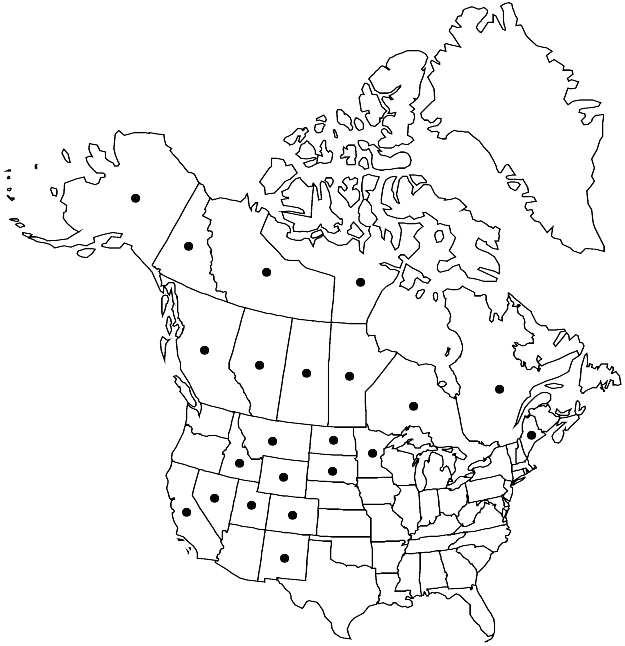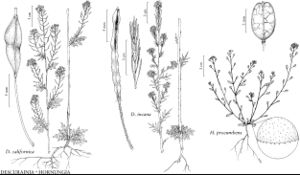Difference between revisions of "Descurainia incana"
Vasc. Pl. Wyoming, 296. 1988.
imported>Volume Importer |
imported>Volume Importer |
||
| Line 119: | Line 119: | ||
|publication year=1988 | |publication year=1988 | ||
|special status=Illustrated;Endemic | |special status=Illustrated;Endemic | ||
| − | |source xml=https:// | + | |source xml=https://bitbucket.org/aafc-mbb/fna-data-curation/src/2e0870ddd59836b60bcf96646a41e87ea5a5943a/coarse_grained_fna_xml/V7/V7_821.xml |
|tribe=Brassicaceae tribe Descurainieae | |tribe=Brassicaceae tribe Descurainieae | ||
|genus=Descurainia | |genus=Descurainia | ||
Latest revision as of 22:36, 5 November 2020
Biennials; usually eglandular, rarely glandular; finely pubescent, sometimes canescent, trichomes dendritic. Stems erect, unbranched basally, often many-branched distally, (1.5–)2.5–12 dm. Basal leaves: petiole 1–3.5(–5.5) cm; blade pinnatifid, broadly lanceolate to oblanceolate or obovate in outline, 1.5–10(–13) cm, lateral lobes linear to oblong or narrowly lanceolate, [3–10(–15) × 1–3(–5) mm], margins entire. Cauline leaves sessile or shortly petiolate; blade smaller distally, distal lobes often narrower. Racemes considerably elongated in fruit. Fruiting pedicels erect to erect-ascending, straight, 2–8(–11) mm. Flowers: sepals erect, yellowish, oblong, 1–1.8 mm, sparsely pubescent; petals oblanceolate, 1.2–2 × 0.3–0.6 mm; median filaments 1.4–2 mm; anthers 0.3–0.4 mm. Fruits erect, (often strictly appressed to rachis), linear, slightly torulose, (4–)5–10(–15) × 0.7–1.2(–1.5) mm, (acute at both ends); valves each with distinct midvein; septum often with distinct midvein; ovules 14–22 per ovary; style 0.1–0.4 mm, glabrous. Seeds uniseriate, reddish brown, ellipsoid to narrowly oblong, 0.8–1.2 × 0.4–0.5 mm. 2n = 14, 28.
Phenology: Flowering May–Sep.
Habitat: Alpine and subalpine areas, gravel and sand bars, scree, grassy slopes, prairies, steep rocky slopes, roadsides, disturbed sites, waste grounds, meadows, spruce-fir, pine, aspen, or sagebrush communities
Elevation: 100-3500 m
Distribution

Alta., B.C., Man., N.W.T., Nunavut, Ont., Que., Sask., Yukon, Alaska, Calif., Colo., Idaho, Maine, Minn., Mont., Nev., N.Mex., N.Dak., S.Dak., Utah, Wyo.
Discussion
Descurainia incana is a distinctive species readily separated from the other North American taxa of the genus by having fruits and fruiting bases strictly appressed to rachises, and septums with a distinct midvein. Collections identified as such, but with fruits and pedicels not or only weakly appressed to the rachis, most likely represent hybrids between this species and others.
Selected References
None.
